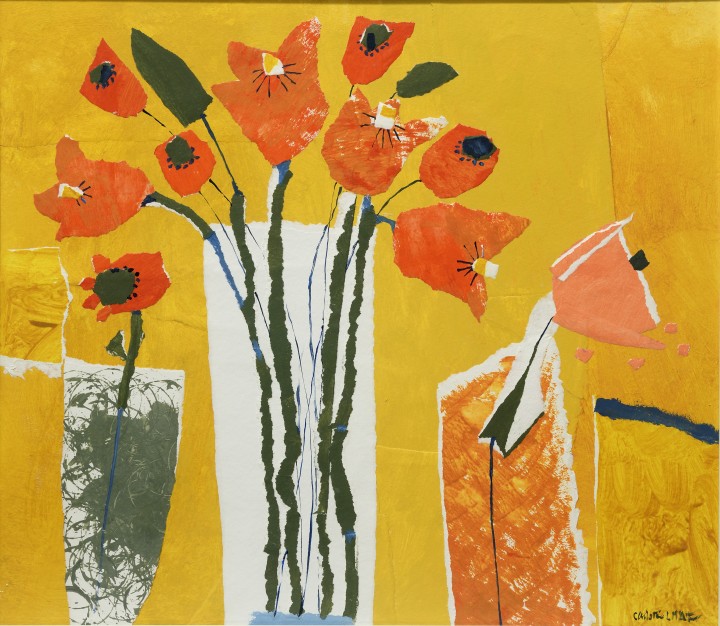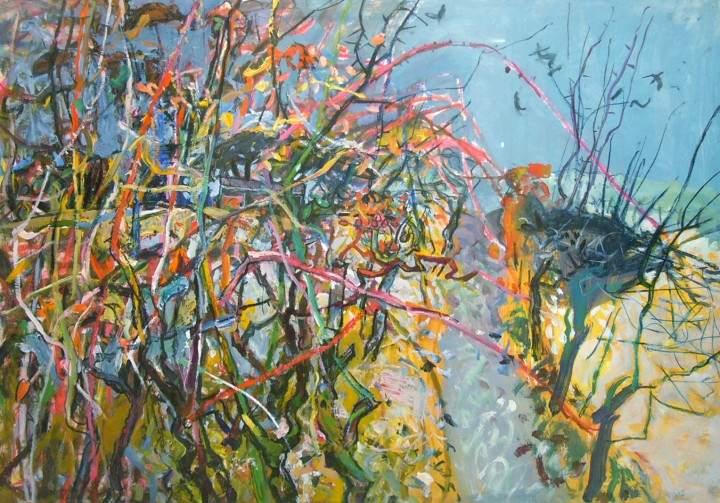Scottish Art News
Latest news
Magazine
News & Press
Publications
Big Moves for The Roger Billcliffe Gallery
By Susan Mansfield, 13.07.2022

Roger Billcliffe sits at his desk in his gallery in Glasgow’s Blythswood Street and looks back 30 years. Make no mistake, the 30th anniversary of the Roger Billcliffe Gallery this summer is a celebration. But he’s looking out on a very different world to the one in which the gallery first opened.
The impact of the pandemic on Glasgow’s business district is stark. The city has one of the lowest rates in the country of workers returning to the office, less than 10 per cent, compared with 25-40 per cent in many cities. The streets are quiet, some small businesses have closed. And this, Billcliffe says, is part of a process of change which began long before Covid-19.
When the Billcliffe Gallery opened in 1992, the area around Blythswood Square, Bath Street and West Regent Street was “bustling and booming” with bankers, architects, accountants, lawyers, many of them potential buyers of art. For the biggest private gallery in Scotland, operating on five floors, it was the ideal place to be.
Billcliffe, an art historian trained at the Courtauld Institute, had held curatorial posts at the Walker Art Gallery in Liverpool, the Hunterian in Glasgow and at Kelvingrove where he was Keeper of Fine Art. He has continued to write and publish over the years on the Glasgow Boys, the Scottish Colourists and Charles Rennie Mackintosh, including a major survey ‘Charles Rennie Mackintosh and the Art of the Four’, published in 2017.
In 1979, he became director of the Fine Art Society, based in the same five-storey building on Blythswood Street. When the FAS decided to close the Glasgow branch in the early 1990s, he and Norman Macfarlane decided to take over the building and open an independent gallery.
.jpg) Alexander Goudie, Drouthy Neighbours Meet, c. 1996. © Estate of Alexander Goudie. Courtesy Roger Billcliffe Gallery.
Alexander Goudie, Drouthy Neighbours Meet, c. 1996. © Estate of Alexander Goudie. Courtesy Roger Billcliffe Gallery.
It was an interesting time in the art world in Glasgow. A few years earlier, the New Glasgow Boys had blazed across the art scene, bringing what was hailed at the time as a bold revival of figurative painting, and going on to success in London and New York. At the same time, Glasgow School of Art was shifting its focus toward conceptual art as the first graduates from David Harding’s Environmental Art course began to make their mark.
Behind these lay a generation of painters trained by artists such as Jack Knox, David Donaldson, Alexander Goudie and Duncan Shanks, struggling to show and sell their work. Many would gravitate to the Billcliffe Gallery. Billcliffe says: “The bread and butter of the gallery was contemporary Scottish painting. We had more space than anybody else, and all the artists wanted to show here.”
The gallery established an impressive list of Scottish painters, including Donaldson and Shanks, Glen Scouller, Christine McArthur, Michael Scott, George Devlin and John Boyd. Over the years, others joined: Gordon Mitchell, Ann Oram, Mhairi McGregor, and Peter Howson.
“We helped build the careers of quite a lot of artists. We’ve had consistently successful shows by Goudie, Donaldson, James Robertson, Scouller, Shanks. We kept their work in front of the Scottish public, and I’m pleased that happened. It’s been an interesting time, it’s been enjoyable.”
The gallery held a steady course while the Glasgow art scene changed, embracing the arrival of conceptualism. “The art school is not producing the same number of painters for obvious reasons. It’s only natural that should happen, though personally I believe you only can sell things you can hang on a wall, not non-fungible tokens or ephemera.”
 Duncan Shanks, High Paths. Courtesy the Artist and Roger Billcliffe Gallery.
Duncan Shanks, High Paths. Courtesy the Artist and Roger Billcliffe Gallery.
He speaks with satisfaction of being able to find a home for Alexander Goudie’s major series of Tam O’Shanter paintings, negotiating the sale as a gift for Rozelle House in Ayr. There was a landmark exhibition of Peter Howson’s designs for Don Giovanni, and an exhibition which showcased corporate collecting in Scotland, borrowing pictures from banks, financiers, distillers and energy companies.
Now, he says, many of these have sold their collections. Some art dealers have closed or merged, and the major auction houses have no more than a token presence in Glasgow. There is a new generation of collectors, too, with different tastes and priorities.
Like many gallerists, Billcliffe managed a successful online pivot during the lockdown, and says now 50% of transactions originate online. But changes in the market, rising costs and his own impending retirement (“in two years time, when I will be 78”) means it’s time for a change.
The gallery will leave the five-storey building in Blythswood Street at the end of the summer for smaller premises. “This building is wonderful to work in, but very expensive to manage. All of these factors have made us look at new solutions, so we will continue to represent our artists in the centre of Glasgow without a five-storey building.”
That means the anniversary show ‘30 Years of Painting’ is also “a sort of a farewell”, featuring works from artists loved by the gallery over the years, from J D Fergusson and Margaret Morris to Armour, Shanks, Scouller, Mitchell and McArthur. There are two large works by Peter Howson, and paintings by fellow New Glasgow Boys, Steven Campbell and Stephen Conroy. It’s a showcase of what the gallery has done best through changing times, and will continue to do in the future, albeit on a smaller scale.
Summer 2022: 30 Years of Art is exhibited at The Roger Billcliffe Gallery until Friday 29th July




